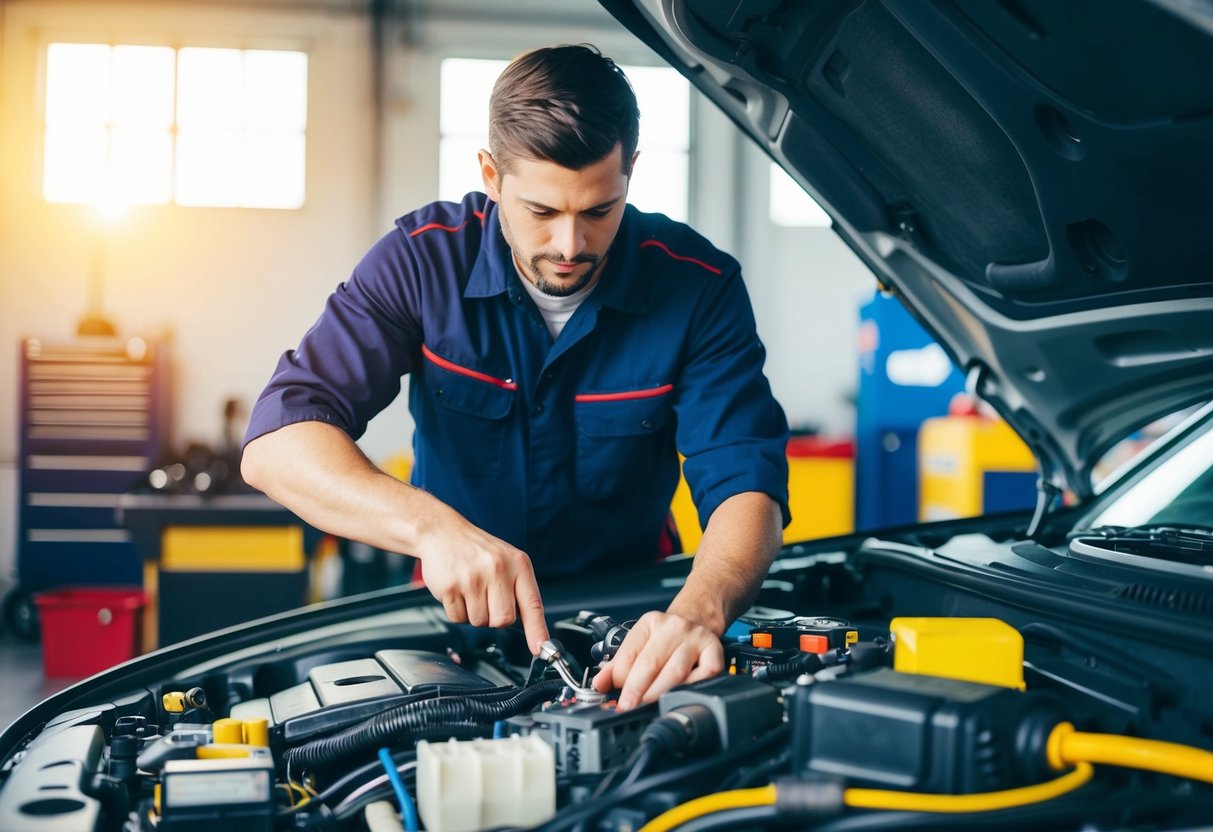How to Create a Comprehensive Car Maintenance Schedule
Tire Rotation and Balancing
Tire rotation involves changing the position of each tire to promote even wear. Regular rotation, usually every 5,000 to 7,000 miles, can extend tire lifespan and improve vehicle stability. This process helps distribute tire wear evenly across all tires and reduces the risk of vibration.
Balancing is crucial for smooth driving. It involves adjusting the weight distribution of tires to eliminate imbalances that cause vibrations or uneven wear. This procedure typically coincides with rotation services. Together, rotation and balancing support optimal tire performance and longevity, maintaining comfort and safety for drivers and passengers.
Wheel Alignment
Wheel alignment ensures that the tires meet the road at the correct angle. Misalignment can cause uneven tire wear, affecting handling and safety. Poor alignment often results from hitting potholes or curbs. Symptoms may include steering pull or irregular tire wear patterns.
Routine alignment checks, typically recommended every 10,000 miles or when noticing symptoms, are vital for maintaining smooth and efficient vehicle operation. Proper alignment optimizes fuel efficiency and tire life. It also enhances driving comfort, ensuring the vehicle performs as intended. Accurate alignment reduces unnecessary tire strain and contributes to consistent tire maintenance.
Electrical Components and Lighting

Maintaining the electrical components and lighting in a car is crucial for safety and reliability. Key tasks include testing the battery to prevent starting issues and checking headlights and signal lights to ensure their proper function. Regular attention to these elements helps avoid potential hazards on the road.
Testing Battery Performance
The car’s battery is a critical part of its electrical system. Testing battery performance is vital to ensure reliability. Regular testing can reveal issues before they cause a breakdown. Tools like a multimeter can be used to check the voltage level. A healthy battery typically reads around 12.6 volts when fully charged.
It’s important to also assess battery terminals and connections for signs of corrosion, which can hinder performance. Cleaning the terminals periodically with a mixture of baking soda and water helps maintain a good connection. If a battery continues to show weak performance, replacing it may be necessary to avoid future troubles.
Inspecting and Replacing Headlights and Signals
The headlights and signal lights are essential for safe driving, especially during night or adverse weather conditions. Regular inspections help ensure they are functioning properly. It’s important to check for burnt-out bulbs and replace them promptly. When replacing a headlight, care should be taken to use the correct bulb type for the vehicle make and model.
The alignment of headlights can drift over time. Misalignment can cause reduced visibility or glare for other drivers. Adjusting the headlights manually according to the vehicle’s manual will help maintain optimal positioning. Likewise, signal lights must be inspected as failing to illuminate can lead to miscommunication with other drivers. Periodic checks and replacements, when necessary, contribute to overall vehicle safety.
Air Filtration and Ventilation
Maintaining clean air filters is crucial for the optimal performance of a vehicle’s engine and for ensuring a healthy cabin environment. Regular checks and replacements of these components can lead to improved fuel efficiency and better air quality inside the car.
Replacing Engine Air Filters
Engine air filters play a critical role in ensuring that the engine receives clean air free from debris and contaminants. Regularly inspecting the engine air filter is essential, typically every 12,000 to 15,000 miles, or as specified in the vehicle’s manual. One sign of a clogged filter is reduced engine performance and decreased fuel efficiency.
It is important to choose the right filter type for the vehicle. Options include paper, foam, and high-efficiency particulate air (HEPA) filters. Each type offers different benefits, such as improved filtration or extended lifespan. The process for replacing an engine air filter usually involves removing the filter housing, taking out the old filter, and installing the new one securely. Proper installation ensures that the engine continues to operate smoothly without air intake issues. During replacement, check for any debris in the filter housing and clean it if necessary.
Cabin Air Filter Assessment
Cabin air filters are designed to purify the air coming into the vehicle’s interior, filtering out pollen, dust, and other pollutants. These filters are typically located behind the glove compartment or under the hood, depending on the vehicle model. Replacing cabin air filters every 15,000 to 25,000 miles can enhance the air quality inside the cabin and improve the performance of the heating and air conditioning systems.
Signs that a cabin air filter needs replacement include reduced airflow through the vents, unpleasant odors, or increased dust inside the car. When assessing the filter, it is important to note its condition, checking for visible dirt and blockage. If the filter appears dirty or clogged, it should be replaced promptly to ensure clean air circulation throughout the vehicle. Regular maintenance of the cabin air filter contributes to a more comfortable driving experience.



